
Chicago Social Practice
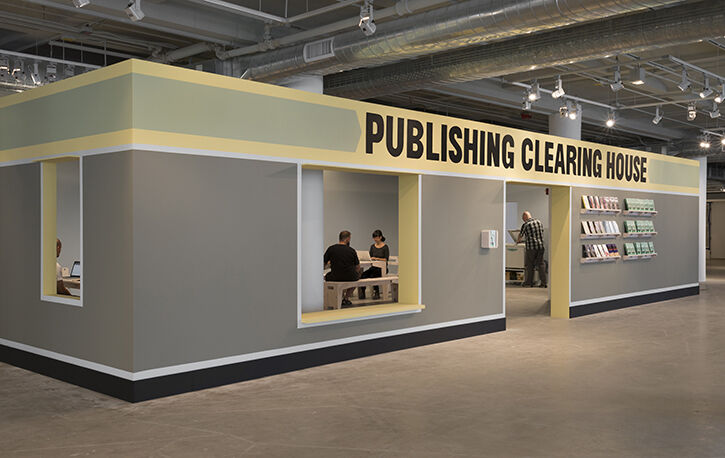
Exhibition: A Proximity of Consciousness: Art and Social Action
This exhibition (September – December 2014) began as a research project on social practice, as Chicago’s role in the development of this field was little known in the US and beyond. For the artists in the show, the city itself was a springboard for a new way of thinking about art at the intersection of society. Some were driven by, and all respected, the history imprinted on Chicago by Jane Addams and John Dewey whose work at the end of the 19th century sought to make the city a model of social change for the world. The work of this group of artists influenced generations, contributing to social practice becoming a worldwide phenomenon, and the exhibition brought their ideas together through newly commissioned projects. The title, A Proximity of Consciousness, was inspired by Dewey’s belief that “the clear consciousness of a communal life, in all its implications, constitutes the idea of democracy.” Artists included: Jim Duignan, Pablo Helguera, Iñigo Manglano-Ovalle, Dan Peterman, Pocket Guide to Hell (Paul Durica, Anthony Martinez, and Heather Radke), J. Morgan Puett, Michael Rakowitz, Tamms Year Ten and Laurie Jo Reynolds, Temporary Services, and Rirkrit Tiravanija.
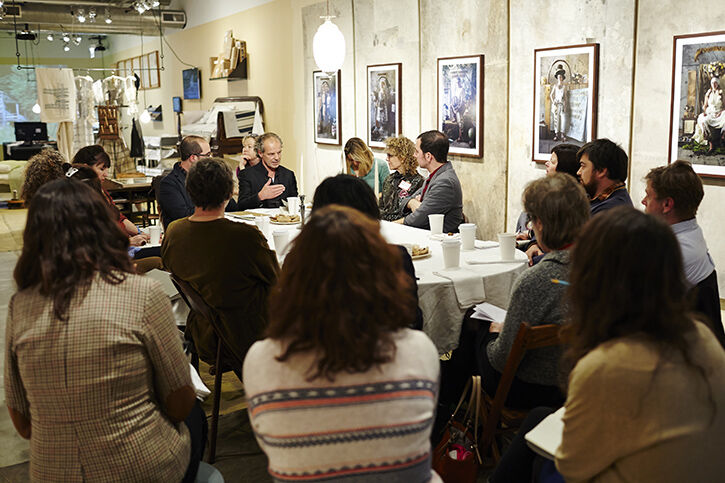
Symposium: A Lived Practice
This weekend intensive program (November 6 – 8, 2014) sought to probe the reciprocal relationship of art and life, as such has been a driving question throughout time and has taken many forms across civilizations. The symposium considered how this question might be addressed today: What might we learn from artists who are changing our communities and social landscape through their innovative cultural output and through the ways that they live their lives? What can we glean from art practice to cultivate our own life practice? The program featured presentations by artist and social choreographer Ernesto Pujol; poet, essayist, translator, and cultural critic Lewis Hyde; founder of the Chicago Resource Center, Ken Dunn; among others, and was presented with the support of the Goethe-Institut Chicago, Federal Republic of Germany, Italian Cultural Institute of Chicago, Salzburg Global Seminar, and SAIC’s Visiting Artists Program.
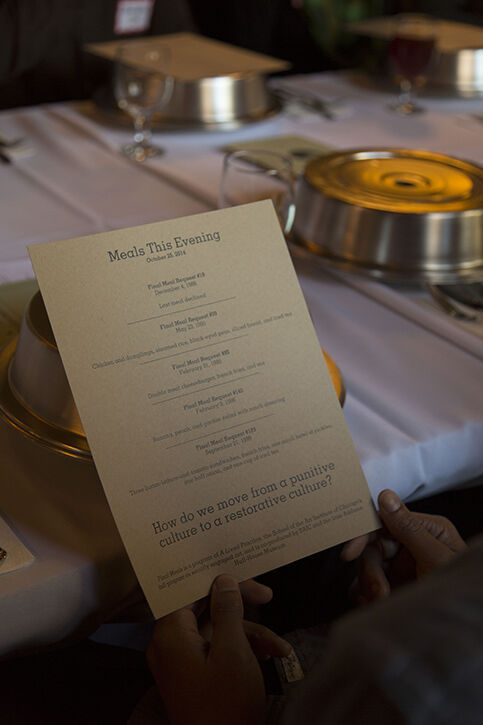
Related Programs
A series of programs grew from these research efforts and manifest in various forms throughout the season, including: “Creative Resistance in a Prison Nation,” organized by artists Sarah Ross and Kevin Kaempf with support of the Jane Addams Hull-House Museum, which provided a monthly forum for the growing number of artists, organizations, and activists in Chicago that confront, agitate, and dismantle the prison nation, inviting them to share their experiences and challenges; Final Meals, created by artist collective Lucky Pierre, brought together community members including local government officials, activists, students, and artists in the Residents’ Dining Hall of the Jane Addams Hull-House Museum for a conversation on prison reform. The guests also took part in the artists’ ongoing community-based performance Final Meals, which references the final meals requested by Texas death row inmates that was published online by the Texas Department of Criminal Justice since 1982. For a full listing of related programs, visit the program website.
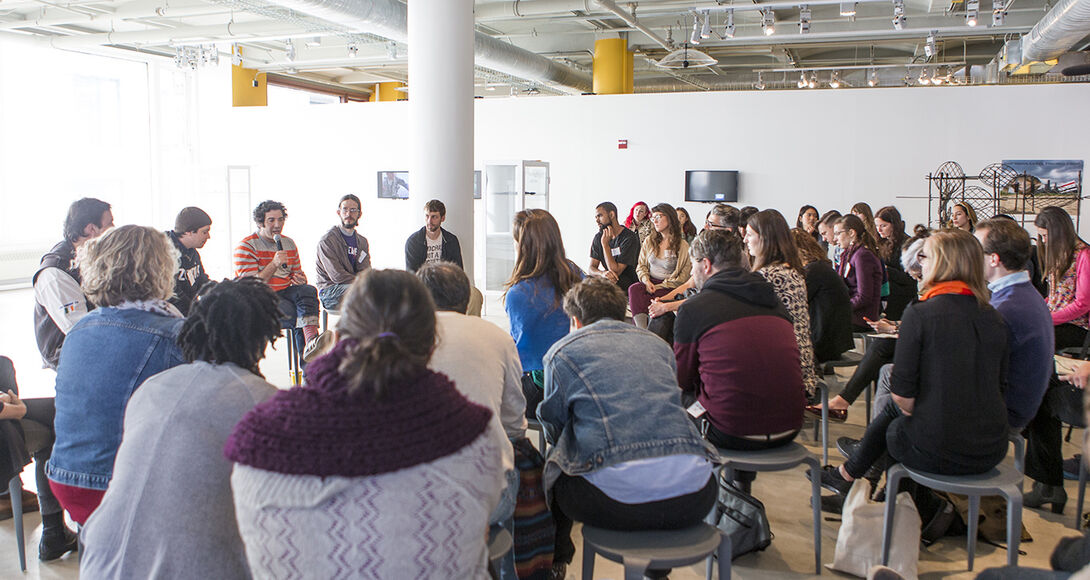
College Consortium: For Art in Society
The Chicago Consortium for Art in Society brought together students from seven of Chicago’s major universities and colleges to enter into direct dialogue and engagement with seasoned practitioners and artists who bring art and life together in their practice. This program was a unique opportunity for curious and motivated students to work together across institutions and among multiple academic disciplines, as they imagined their stake in the future through this shared, co-learning experience. The consortium was convened by SAIC and supported in part through an SAIC IdeaLab grant. Consortium partners included art and social practice leaders representing: Columbia College Chicago, DePaul University, Northern Illinois University, Northwestern University, the University of Chicago, and the University of Illinois Chicago.
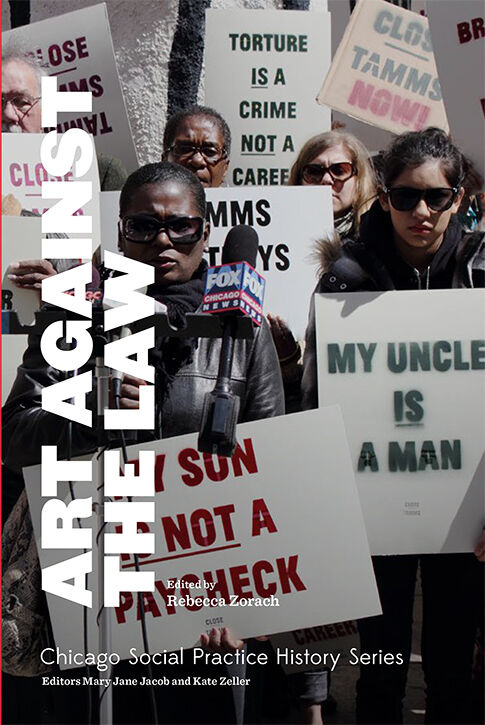
Publication: Chicago Social Practice History Series
For this inquiry into the history of social practice in Chicago, the creation of publications became essential. This series examines for the first time Chicago’s thinkers and makers that have defined the intellectual and creative life of the city. With nearly 30 chapters each, these volumes locate Chicago’s critical social thought and practices within a history of modern urban change and its commensurate societal issues as played out in the complexities of its communities. The inspirational starting point is Jane Addams and John Dewey, with the mission to recall movements and collectives in the 20th century, and the need in the fields of art, architecture, and design to recognize Chicago’s present-day committed practitioners. The series offers a depth of geographic and historical context for the continued work around social design, including education, housing, food, ecological urgencies, prison reform, and more. Volumes include: Art Against the Law, edited by Rebecca Zorach, Immersive Life Practices, edited by Daniel Tucker; Institutions and Imaginaries, edited by Stephanie Smith; Support Networks, edited by Abigail Satinsky; and A Lived Practice, edited by Mary Jane Jacob and Kate Zeller. The series is published by the SAIC and distributed by the University of Chicago Press. The series was also made possible through grants from SAIC’s Earl and Brenda Shapiro Center for Research and Collaboration, Graham Foundation for Advanced Studies in the Fine Arts, and Elizabeth Firestone Graham Foundation.
